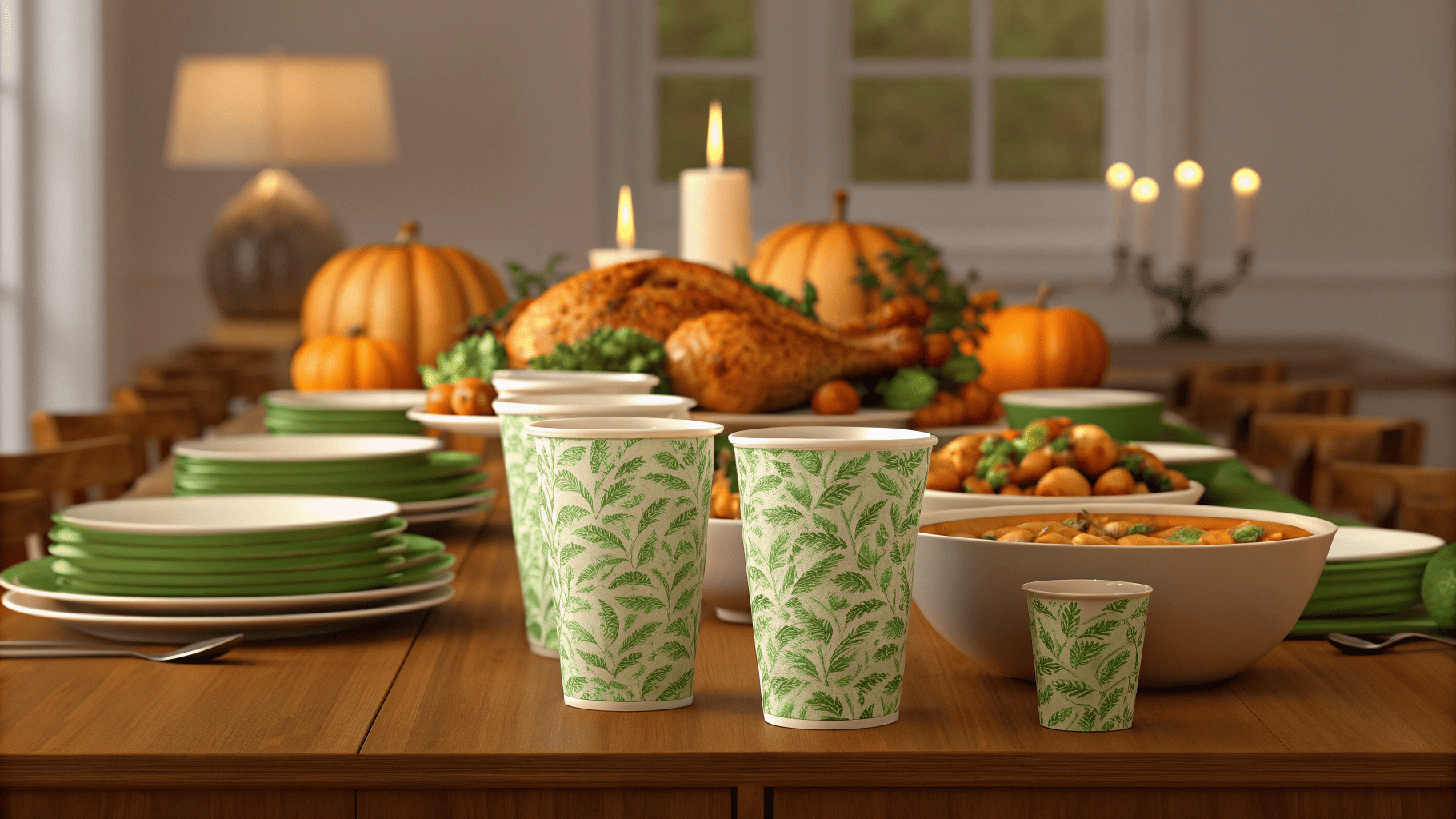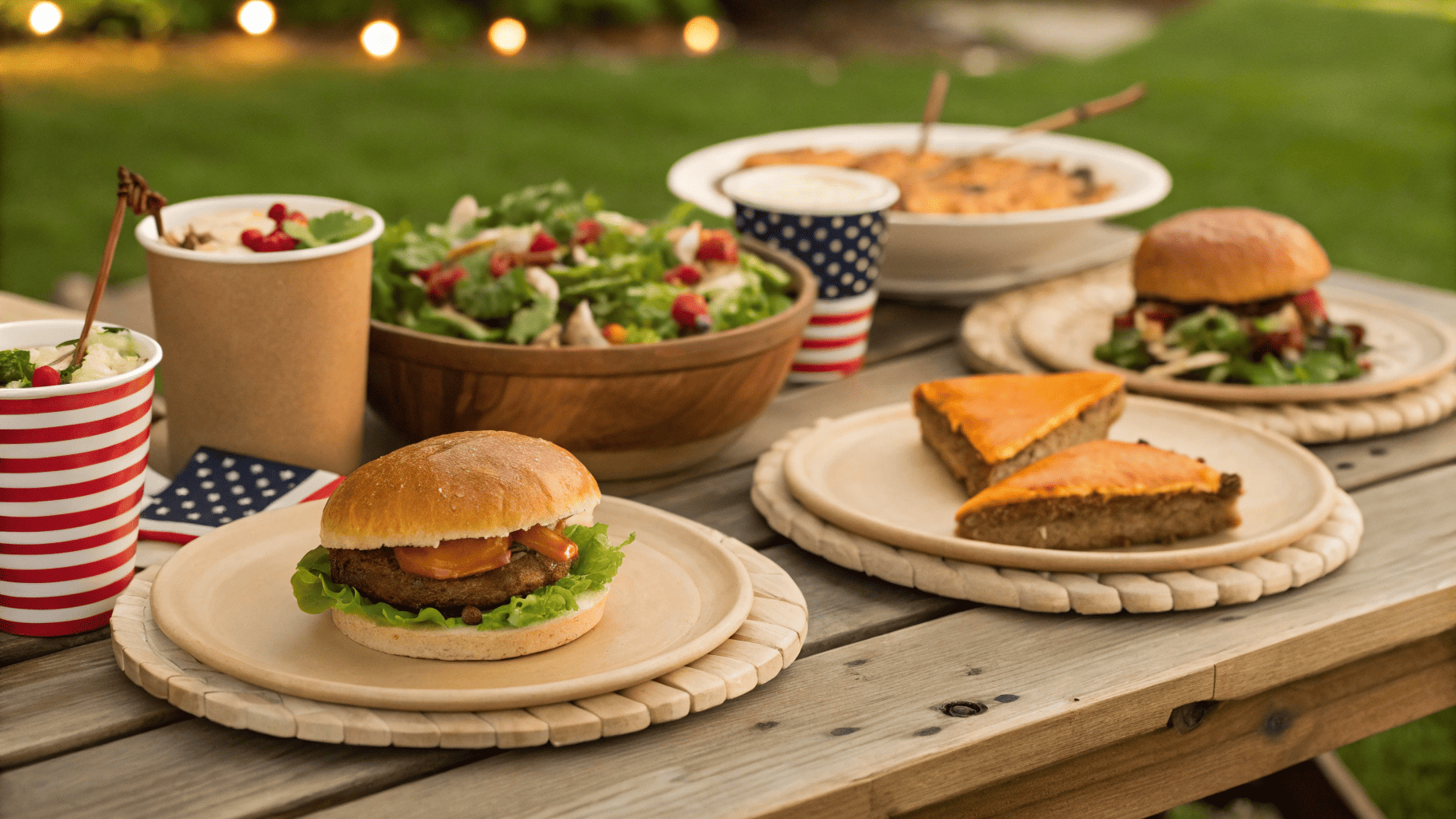In the US, paper plates1 are everywhere—from backyard BBQs to big holidays. But is this common habit really a part of American dining culture?
Yes. Over 60% of US households use paper or disposable plates2 at least once a month, especially for outdoor gatherings, parties, and holidays like Thanksgiving and 4th of July.

I have visited the US many times for packaging expos and supplier meetings. At neighborhood gatherings, paper plates1 are common—it saves cleanup, fits casual cuisine, and is part of the convenience-driven lifestyle. Let’s explore how often they’re used, cultural patterns, and the growing eco-friendly shift3.
Paper plates vs reusable dishes in the US: Which is more common?
Many think Americans mostly use reusable ceramic dishes4 at home—but the reality is more mixed.
Reusable dishes dominate for daily meals, but paper plates1 are widely chosen for large groups, casual events, and outdoor dining due to convenience and cleanup ease.

Statista (2023) data shows the annual US paper plate and bowl market is over USD 5 billion. About 60% of households use disposable tableware at least monthly. For daily home dining, most still use ceramic or glass due to cost efficiency and tradition. But in high-volume or outdoor events, the time saved on washing is a key driver.
Usage Frequency by Occasion
| Occasion Type | Paper Plate Use Rate | Reusable Dish Use Rate |
|---|---|---|
| Daily family meals | ~10% | ~90% |
| Backyard BBQ / Picnic | ~85% | ~15% |
| Large holiday meal | ~20–25% | ~75–80% |
| School / Community event | ~90% | ~10% |
Do Americans use paper plates for holiday meals like Thanksgiving?
Some imagine all Thanksgiving meals5 on fine china, but that's not always true.
Yes—about 20–25% of US households use some disposable plates2 during big holiday meals, often for desserts or soups, especially in large or multi-table gatherings.

The NPD Group found this pattern stems from practicality—when serving 20–40 guests, kitchens lack dish capacity. Many families serve the main course on reusable plates, but switch to paper for easier service of pies, cakes, or soup. This hybrid style reduces dishwashing while still keeping the main meal “formal.”
The environmental debate: Are disposable plates bad for the planet?
This is the core challenge to paper plate use in the sustainability era6.
Disposable does not always mean unsustainable if made from renewable resources with compostable coatings7, and lifecycle impact is considered.

High-quality plates made from FSC-certified pulp or bagasse fiber have a much lower impact than polystyrene. PLA coatings meet ASTM D6400/EN 13432 compost standards. A Franklin Associates LCA study8 (2020) found in high-water-use areas or large events, compostable paper plates1 may have a smaller total carbon footprint than washing ceramic plates multiple times with hot water and detergent.
Environmental Impact Factors
| Plate Type | Renewable? | Compostable? | LCA Carbon Footprint in High-Water Regions |
|---|---|---|---|
| FSC pulp + PLA paper plate | ✅ | ✅ | Lower than ceramic washed >3× per day |
| Bagasse + PLA paper plate | ✅ | ✅ | Lowest among disposables |
| FSC pulp + PE paper plate | ✅ | ♻ Recyclable in some systems | Comparable to reusable if reused <200× |
| Polystyrene foam plate | ❌ | ❌ | Highest |
Paper plate consumption statistics in the USA?
Statistics help explain just how integrated these products are into US life.
US paper plate/bowl market: $5 billion/year; 60% monthly use rate; Millennials & Gen Z9 drive eco-friendly option demand, with 70% willing to pay 5–10% extra.
Millennials and Gen Z are leading the change—focusing on products labeled “eco-friendly/compostable” when buying disposables. Brands that add compostable certification logos and sustainable material claims on plates win loyalty in eco-conscious segments. These factors create a solid market for premium, branded, sustainable paper plates1.
Case in Action: Eco Branding at US Summer BBQ Chain
A fast-growing BBQ franchise in Texas replaced plain paper plates1 with branded PLA-coated bagasse plates. The move reduced 18 tons of traditional coated disposables annually. The compostable logo printed next to the brand improved guest perception, with 4.5% higher customer satisfaction scores during post-meal surveys.
Conclusion
Yes—paper plates1 are normal in US life, often by choice for convenience at events and holidays. With renewable materials and compostable coatings7, they can meet both cultural needs and sustainability goals.
1.Discover how paper plates fit into American dining culture and their convenience for various occasions. ↩
2.Explore the environmental impact of disposable plates and their role in sustainability. ↩
3.Understand the growing demand for eco-friendly options in disposable tableware among consumers. ↩
4.Find out why ceramic dishes remain popular for daily meals despite the convenience of disposables. ↩
5.Learn about the surprising use of paper plates during Thanksgiving and how it affects dining. ↩
6.Explore how sustainability concerns are shaping consumer choices in disposable tableware. ↩
7.Learn about compostable coatings and their benefits for the environment and disposable products. ↩
8.Delve into findings from LCA studies that compare the environmental impacts of paper plates and ceramics. ↩
9.Discover how younger generations are driving the demand for eco-friendly disposable products. ↩
